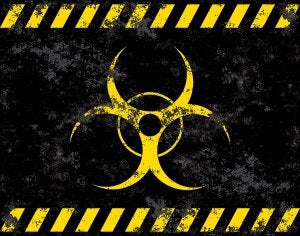-
California’s Truck Lane Requirements
Commercial trucking is a highly regulated industry, with good reason. Big rig accidents comprise a significant portion of wrongful death cases and accident lawsuits filed near Riverside and throughout California. When an accident attorney takes on a big rig crash case, he or she carefully reviews all the evidence to determine if the trucker failed to abide by any requirements , such as California’s truck lane requirements.
In this state, truck drivers must use the lane designated by any posted signage. If road signs do not indicate a designated truck lane, then big rigs must keep to the right-hand lane. Trucks passing other vehicles must use the lane adjacent to the far right-hand lane, or a designated lane. These lane requirements are intended to cut down on the number of lane change accidents between big rigs and passenger vehicles. These crashes can be particularly dangerous, and often result in accident lawsuits. The penalty for a first violation of a lane requirement results in a $100 fine. Subsequent violations within the same year result in higher fines.

““
-
Did Your Loved One Die After a Hospitalization?
Most patients go into a hospital expecting to feel better when they leave. And while the majority of healthcare providers are dedicated, conscientious individuals who try to do their best for their patients, mistakes do happen. Sometimes, those mistakes can be fatal. If your loved one was hospitalized, discharged, and then became fatally ill, you may wish to meet with a personal injury lawyer serving Riverside. Many families find that pursuing justice in court helps them to find a sense of closure after a tragic loss .
Exploring Post-Hospitalization Complications
Patients are typically discharged before they are 100% recovered, with the understanding that they will continue to convalesce at home or in a long-term care facility. This is standard practice, but unfortunately, it means that patients can develop complications outside of the hospital that might not be diagnosed right away. One serious problem closely tied to hospitalizations is hospital-acquired infections.

Understanding the Risks of Hospital-Acquired Infections
A hospital-acquired infection is any bacterial, viral, or fungal infection that was contracted while the patient was in the hospital. The symptoms may not be apparent until after discharge. Patients are at a higher risk of becoming sick in healthcare facilities because their immune systems are more likely to be compromised, and they’re exposed to the germs from other patients and staff members. Some of the most common hospital-acquired infections include:
- Kidney infections
- Urinary tract infections
- Bloodstream infections
- Surgical site infections
- Respiratory infections, including pneumonia
Establishing Hospital or Healthcare Provider Liability
Hospital-acquired infections are a well-known and prevalent problem in the medical field, and hospitals actively work to establish more effective protocols to prevent them. However, not all hospitals have strict protocols in place, and not all healthcare providers adhere to adequate infection control practices. A hospital or doctor isn’t automatically liable for a loved one’s death if he or she passed away after being hospitalized. To establish liability, a personal injury lawyer will need access to the individual’s medical records and all other evidence. He or she will consider whether the hospital’s procedures deviated from standard practice, or whether a healthcare provider was negligent. If so, a wrongful death lawsuit may be feasible.
-
My Loved One’s Killer Also Died. Can I Still File a Lawsuit?
 California tort law recognizes the right of a family to file an accident lawsuit if their loved one dies as a result of someone else’s intentional act or act of negligence. This is known as a wrongful death lawsuit. The situation can become more complicated if the defendant also dies. As soon as you learn of this person’s death, contact your accident attorney in Riverside to discuss the next steps in the case.
California tort law recognizes the right of a family to file an accident lawsuit if their loved one dies as a result of someone else’s intentional act or act of negligence. This is known as a wrongful death lawsuit. The situation can become more complicated if the defendant also dies. As soon as you learn of this person’s death, contact your accident attorney in Riverside to discuss the next steps in the case.If you haven’t already filed the accident lawsuit, you can still do so after the defendant dies. The claim will be filed against the negligent individual’s estate. One of the first steps your accident lawyer will take is to determine whether the decedent’s will has already been filed in a probate court. If so, your attorney can file your claim in the presiding court. The estate will be notified of your claim against the assets. Sometimes, simply identifying the correct court can be trickier when the defendant has died. If the individual died while in jail, the probate case may be located either in the court nearest to the jail or near the decedent’s former residency.
-
Keeping Kids Safe from Dog Bites
Children are at a particularly high risk of dog bites, simply because they tend to speak loudly and yell, run around, and wave their arms around. This energetic behavior can be misinterpreted by an otherwise well-behaved pup. Personal injury lawyers near Riverside can help parents in the aftermath of an attack by someone else’s dog , but parents are also encouraged to teach their kids about dog safety early in life.
Watch this featured video to hear from a dog behavioral expert. She and her young daughter demonstrate how kids should behave when a strange, unleashed dog approaches them, and when a friendly, leashed dog approaches. You’ll also get some tips on reading a dog’s body language, which can tell you if an attack is more likely. If an attack does occur, getting your child medical attention is your top priority. When he or she has been treated, it’s time to call a personal injury lawyer.
““
-
Don’t Let Evidence Vanish in a Nursing Home Abuse Case
Even if you meticulously research nursing homes before moving your loved one, he or she may fall victim to nursing home abuse . Know the signs of possible abuse, and talk to a personal injury lawyer serving Riverside as soon as possible if anything raises your suspicions. Your attorney will give you invaluable guidance about preserving evidence for the case, and about your legal options regarding litigation and the nursing home contract.
Take photographs of the evidence.
Visual evidence is difficult to dispute, and it can have a powerful effect on a jury if the case goes to trial. If your loved one has unusual bruises, develops bed sores, or has sustained unexplained lacerations, take pictures of these wounds. Take additional pictures over time to document whether the wounds heal as expected. It’s preferable to time-stamp the pictures, if possible. You should also take photos of any conditions in the room or throughout the nursing home that may have contributed to your loved one’s injuries. These hazards may include worn or ripped carpeting, inadequate lighting, or broken furniture. Get pictures of everything that looks suspicious as quickly as possible, as hazardous conditions may be repaired after an incident in an attempt to avoid liability.
Record witness statements.

Nursing homes tend to be densely populated facilities. Talk to your loved one’s roommate, if applicable, and the neighbors. Talk to other staff members, and write down a timeline of what happened. Ask the witnesses to give you a written, signed statement of their version of the events. It’s important to interview witnesses as soon as possible after the incident, as memories can fade and change over time.Collect documentation.
Just about everything is documented in a long-term care facility, including nursing logs that show who was working a particular shift, records of when medications were administered, and charts that reflect when patients were observed to have injuries. Your personal injury lawyer can assist you in collecting the necessary documents, via a subpoena if necessary.
Request your loved one’s medical records.
Your attorney will need a copy of your loved one’s medical records to prove that he or she suffered injuries, and that those injuries were directly caused by the act of nursing home abuse. It’s not unheard of for nursing home staff to delay taking their residents to the ER when an injury occurs. Check with your loved one’s doctor directly about his or her care, rather than relying on the information provided by the nursing home staff.
-
What Parents Need to Know About Brachial Plexus Injuries
It’s possible for brachial plexus injuries to be acquired throughout one’s lifetime, usually in car or motorcycle crashes. When a newborn is diagnosed with this sort of injury, the parents deserve answers. Brachial plexus birth injuries can range from relatively minor and temporary to permanent and catastrophic. Personal injury lawyers in the Riverside area who handle catastrophic injury cases can investigate the causation. In some cases, a birth injury may be the result of medical malpractice during labor and delivery.
Causes and Risk Factors
The bundle of nerves that stems from the cervical spinal cord and travel down the arm is known as the brachial plexus. The three main ways these nerves can sustain damage are by severing, stretching, or applying excessive pressure to them. In newborns, this can happen during a difficult or prolonged birth, especially if the child is of a large birth weight or is in a breech presentation. As the child passes through the birth canal, the shoulders can become lodged. The pressure can inflict damage to the nerves. In some cases, overly aggressive maneuvering or instrumentation usage by the obstetrician can result in stretched or torn nerves.

Signs and Symptoms
Contacting a personal injury lawyer won’t be your top priority when you’re in the hospital with your newborn. But do try to keep written notes about your child’s condition in the event that you need to file a complaint. Newborns with brachial plexus injuries may display the following problems:
- Lack of a Moro reflex on the affected arm
- Lack of movement in the arm or hand
- Decreased grip strength
- Affected arm held bent and against the body
Babies who will recover usually do so within three to nine months. If your child does not regain movement, strength, and sensation in the affected arm during this time, it’s quite likely that the long-term prognosis will be poor.
Treatments and Rehabilitation
If the brachial plexus injury was caused by medical malpractice, a personal injury lawyer can help you seek compensation to cover your child’s treatment and long-term rehabilitation. Surgery is sometimes attempted if the child doesn’t recover within nine months. Before that time, the infant may benefit from gentle massage and range-of-motion exercises.
-
FAQs and Answers About Lane Change Truck Accidents
Big rig accidents can happen at any time. Merging into traffic and changing lanes are particularly hazardous. Passenger vehicle drivers are fortunate to escape from a truck accident with their lives. Adding insult to injury, survivors must then contend with exorbitant medical bills and perhaps even permanent disability. For survivors in the Riverside area, a car accident lawyer is an essential advocate. He or she can pursue an accident lawsuit to help the survivor secure much-needed compensation to recover from the crash .
When is the truck driver to blame for the crash?
Truck drivers are found to be at least partially to blame in the majority of all types of truck accidents. It’s possible that other factors can contribute, such as poor visibility, inclement weather, and poor road construction. Truck drivers can make dangerous decisions when they are in a hurry to reach their destination, such as weaving between lanes, failing to use a turn signal, failing to remain aware of nearby traffic, and failing to carefully check the mirrors. When filing an accident lawsuit, your lawyer can evaluate the driver’s medical records, as well as surveillance footage, eyewitness statements, and police reports to consider the role of the trucker’s possible negligence.

Aren’t truck drivers trained to make safe lane changes?
Yes, all commercial big rig operators in the U.S. are required to complete rigorous training and testing. However, truck drivers are still human and they often make mistakes, some of which can be costly. During an investigation, your accident lawyer may find that the truck driver was negligent in any of the following ways:
- Being distracted by an electronic device
- Driving aggressively
- Misjudging the distance between vehicles
- Falling asleep at the wheel
- Driving while intoxicated or under the influence of drugs or alcohol
Is it possible for the passenger vehicle driver to be at fault?
Most passenger vehicle drivers know that big rigs need plenty of space on all sides, including in front of them. It’s impossible to slow down such a large vehicle quickly enough to avoid hazards ahead. A car driver may be at fault for the crash if he or she merged into the trucker’s lane ahead of the big rig, and didn’t leave enough space between vehicles.
-
Is There a Statute of Limitations on Toxic Torts in California?
A toxic tort is a claim that someone was harmed or wrongfully killed as a result of exposure to environmental hazards, such as pesticides or groundwater pollution caused by an industrial plant. Like other personal injury lawsuits, residents in Riverside, California and throughout the state are subject to statutes of limitations for toxic torts. This means there is a deadline to file a lawsuit, and if no action is taken by that time, the injured party forfeits the right to pursue compensation in court. To avoid giving up your legal rights, contact a personal injury lawyer as soon as you realize your injuries were caused by someone else’s negligence.

In California, the statute of limitations for filing a toxic tort is two years. The clock starts ticking on the date that the toxic exposure occurred. If the case is a wrongful death lawsuit, the two-year deadline begins on the date of the person’s death. It isn’t always possible for plaintiffs to immediately connect the dots between an illness and toxic exposure. A personal injury lawyer may still file a lawsuit no later than two years from the date that the plaintiff knew or reasonably should have known that harm occurred because of the toxic exposure.
You can also check out some of our previous client testimonials here.
-
The Shocking Truth About Tasers and the Injuries They Inflict
Stun guns have an undeserved reputation for being safe simply because they are intended to be non-lethal weapons. But just because someone might not die from a Taser, doesn’t mean he or she cannot suffer severe injuries. Police officers have a responsibility to use all weapons in a controlled, thoughtful manner. But government liability lawyers in Riverside know all too well the prevalence of police brutality and excessive force violations. Contact a personal injury lawyer right away if you or a loved one has sustained injuries from an unwarranted Taser attack.
Legal Liability
The specifics of a government liability lawsuit can depend on the exact classification of the victim, such as whether he or she was a suspect, detainee, or convict. Since suspects and detainees haven’t been convicted, the use of excessive force or punishment against them could be considered a violation of the Fifth and Fourteenth Amendments, which guarantee the right of due process. On the other hand, the unwarranted use of Tasers against convicts who have already received due process would be a violation of the Eighth Amendment, which protects individuals from cruel and unusual punishment.
Taser Injuries
Tasers can cause severe injuries in several ways. First, hand-held stun guns work by shooting two barbed
 electrodes at the victim. The barbs penetrate the skin, causing a painful wound that requires careful treatment, especially if the barbs penetrated near a sensitive body part like the neck or face. Second, the electrodes deliver up to 50,000 volts of electricity to the body, which disrupts the body’s natural and necessary functions. Third, the jolt of 50,000 volts causes the person to fall to the ground, and to violently and uncontrollably spasm. All of these actions can cause serious injuries, including the following:
electrodes at the victim. The barbs penetrate the skin, causing a painful wound that requires careful treatment, especially if the barbs penetrated near a sensitive body part like the neck or face. Second, the electrodes deliver up to 50,000 volts of electricity to the body, which disrupts the body’s natural and necessary functions. Third, the jolt of 50,000 volts causes the person to fall to the ground, and to violently and uncontrollably spasm. All of these actions can cause serious injuries, including the following:- Penetrating wounds (safe removal of barbs requires specialized medical knowledge)
- Skin burns
- Cardiac disease
- Cardiac arrest and sudden death
- Mental health crisis (possibly exacerbated by substance abuse)
- Head trauma
- Eye injuries
- Testicular torsion
- Fractures
- Torn tendons and ligaments
- Organ damage
Arguably, the possible effects on a pregnant woman are even more frightening. There is a connection between the use of stun guns on pregnant women and miscarriage. Another troubling aspect of indiscriminate Taser use is the fact that it’s impossible for a police officer to know if a person has a pre-existing health condition. A stun gun can interfere with a life-saving pacemaker, for example, yet many officers won’t think twice before using a “non-lethal” stun gun, even when the situation does not warrant it.
““
-
Determining Causation in Court
One of the primary tasks of personal injury lawyers serving the Riverside area is proving causation. This refers to whether the negligent actions taken by the defendant caused the plaintiff’s slip and fall injury. Watch this featured video to learn about two types of causation and how they might be proven in court.
“But for” causation indicates that, but for the defendant’s actions, the plaintiff would not have sustained the injury. For example, but for the defendant’s failure to clear the aisles of a store, the plaintiff would never have been in a trip and fall accident. Another type is substantial causation. This means that the injury might have occurred anyway, but the defendant’s actions substantially contributed to it. As an example, a hypothetical plaintiff with pre-existing knee pain files a personal injury lawsuit, claiming the defendant’s failure to clear the aisles of a store resulted in a fall that required knee replacement surgery. Since the plaintiff has a history of knee problems, he or she might have needed the surgery at some point anyway. However, the defendant’s actions substantially contributed to the worsening of the knee pain, which led to the surgery.
RECENT POSTS
categories
- Uncategorized
- Slip & Fall
- Dog Bites
- Personal Injury
- Motorcycle Injury
- Truck Accident
- Accident Lawyer
- Car Crashes
- Infographic
- Nursing Home Abuse
- Non-Economic Damages
- Wrongful Death
- Personal Injury Lawyer
- Birth Injuries
- Taser Injuries
- Slip and Fall Attorney
- Government Liability Cases
- Settlement Offers
- Private Nuisance Lawuits
- Impacted Fracture
- Tort Law
- Burn Injury
